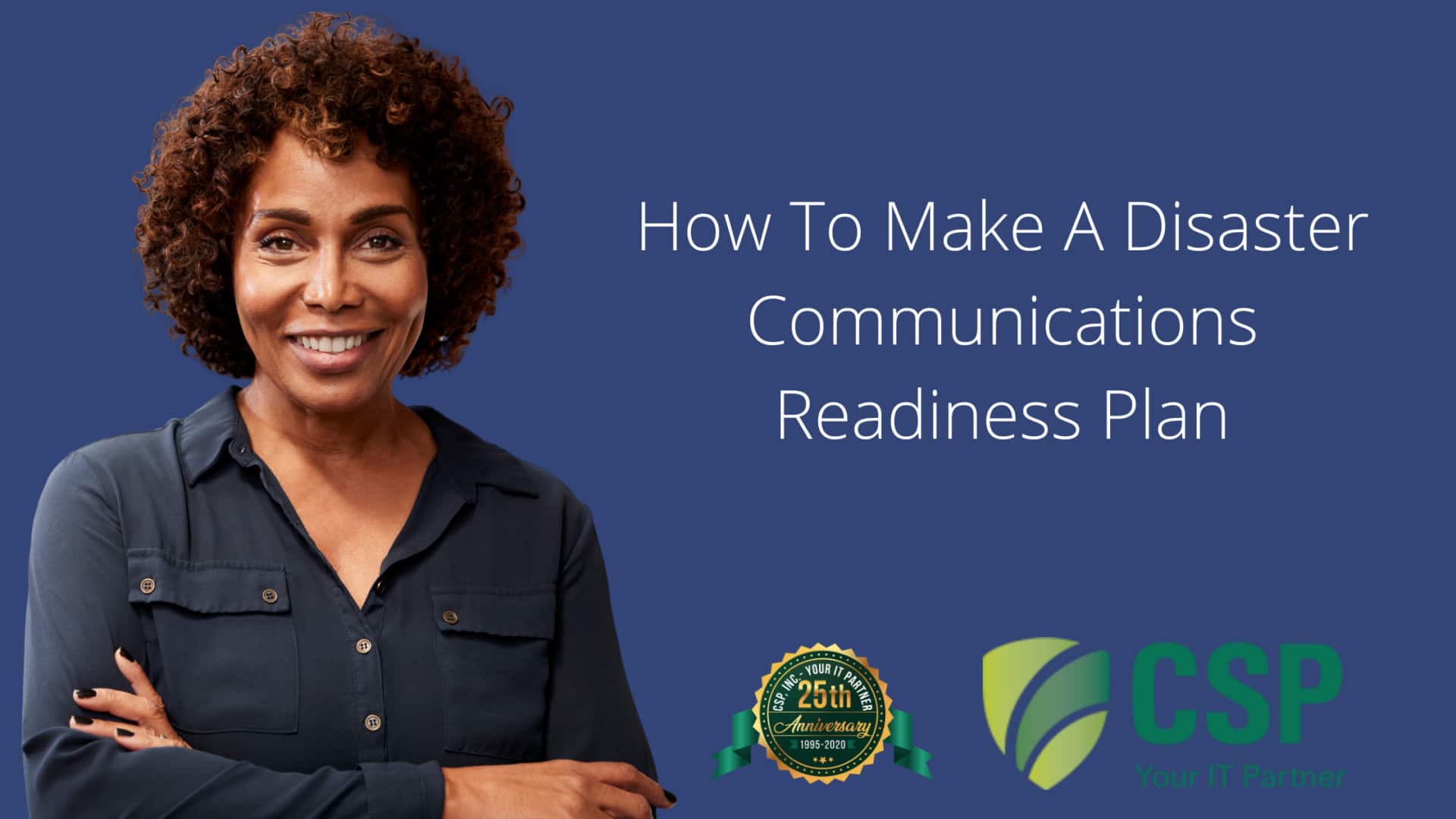Existing CSP Client: (919) 424-2060
SALES: (919) 420-3231

It suddenly happens! A bolt of lightning, a thunderous boom, the power goes out, and you’re left in the dark. When disaster strikes, are you using CSP’s vendor recommended plan?
It’s happened to all of us. A natural disaster strikes, and we’re left holding our breath and picking up the pieces once the event has passed. It disrupted the workflow, and your clients were not able to call in. As for your staff? They’re left shaken and bewildered, wondering what to do next.
Events like these take us by surprise and why we highly recommend clients prepare and follow a simple process created by one of our vendors, 8×8. They’re experts at helping customers, employees, and partners stay connected during a disaster.

As you begin to prepare your communications readiness plan keep in mind, you want customers to have a way to contact you and that your business is still operational. In the event a disaster or an unexpected event takes place, your staff stays fully informed on what to do next.
There are five essential questions to consider when creating your plan.
Step 1. Employee Safety
How easily can an employee tell you they are safe? Your employees’ safety is always a high priority. Your management teams need a streamlined way to account for their team members. How will each employee check-in during an emergency or crisis? Also, what trigger words can they use that conveys their status?
Step 2. Cloud-Based Phones
When your office phones go down, do you have any alternatives? With internet access, you can still make and receive business phone calls. With a cloud-based phone system, there are essential and crucial features available. With smart call routing and auto-attendant services, your business number follows you everywhere, and your contacts can still reach you.
Step 3. Online Group Chats
Where do employees go when there is no disaster? They head over to their social media accounts and chat with friends. That same medium can be used to create a company chat group. From your smartphone, you can chat, make conference calls, and contact suppliers. In the event of a disaster, your employees can still communicate with you in real-time.
Step 4. Video Messages
Can you setup prerecorded video messages? Setting up prerecorded video messages for employees, customers, or suppliers is a great medium to convey urgency. You can also use these videos to create classroom instructions, simulations, and the steps to take if the office is forced to close. This is particularly important when a disaster strikes.
Step 5. Leverage Mobile Devices
What features on mobile devices are not fully leveraged? A huge advantage of creating a disaster communications readiness plan is uncovering what additional device features will help your business in the event of a disaster. And honestly, there are many features you probably don’t use or know about. With mobile device capabilities able to access files from the cloud, if your physical location is down, your online site is still live.
If you’ve never put a plan together, you’ll discover how easy it is to create your first communications readiness plan from our CSP team. We’ll help you uncover all the different options and possibilities – we’re also here to answer any and all questions you have about IT, our services, and what they could do for you.
Click here to get started or call us at (919) 424-2060 to schedule a consultation.
Learn more on how Managed IT Services can help your business.
Discover the best IT Company suited for your business.

Always at your service to provide the highest level of quality support to our customers.

Anthony Firth Client Engineer

“I’m passionate about building and fostering relationships, and finding solutions for success.”

Michael Koenig Client Account Manager

“I help clients stabilize and grow their IT infrastructure so they can focus on growing their core business.”

Josh Wilshire Systems Engineer Team Lead

“I strive to provide the highest level of quality service to our customers.”

Tommy Williams Sr. Hardware Engineer

“I’m driven by the steadfast belief that technology must serve as a business enabler. This mantra has driven 21
Years of successful partnerships.”

Stephen Riddick VP Sales & Marketing

“CSP doesn’t succeed unless your company succeeds.”

Stephen Allen Inventory Manager

“Through my intuition and genuine concern to help others I have built long-lasting relationships with our customers, co-workers and business partners.”

Scott Forbes VP Support Services

“Every day, I work with clients to help plan the future of their businesses.”

Michael Bowman vCIO

“Your IT problems become our IT solutions.”

Mark McLemore Project Engineer

“Managing internal and external operations to ensure that CSP provides quality and reliable customer service .”

Margie Figueroa Business Manager

“Providing quality internal and externals financial support to our customers and accounting support to CSP.”

Katie Steiglitz Accounting Administrator

“Some call me the CEO. I call myself the Cheerleader for an awesome team!”

William B. Riddick Founder & CEO

“CSP is here to assist you with your IT needs.”

Beth Wylie Inside Sales Manager




On What Questions You Need To Ask Before Signing Any Agreement.
"*" indicates required fields

Raleigh IT Support Company and IT Services Provider | CSP Inc.
1310 Nowell Rd,
Raleigh, NC 27607
Existing CSP Client: (919) 424-2060
SALES: (919) 420-3231
Receive email updates and informative marketing materials by subscribing to our newsletter.
"*" indicates required fields